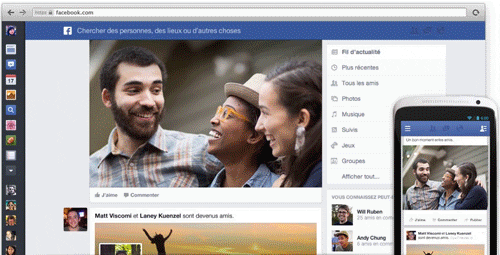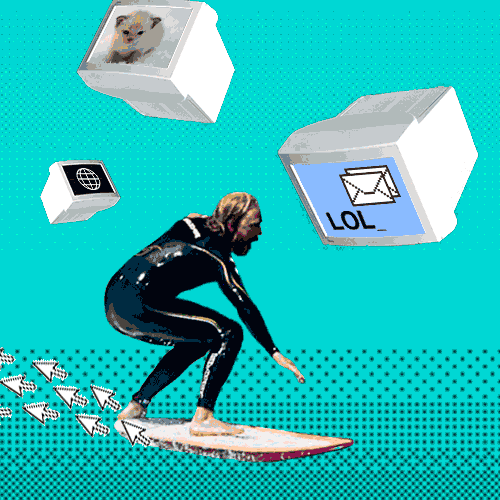Hello, Web 3.0.
What will web 3.0 mean for HR?
We are insanely close to being over 1000 people subscribing to this newsletter - I’m blown away!
If you aren’t subscribed yet, join the curious and like-minded HR folks by subscribing here:
👋 Hello friends!
Once again, we are exploring the outer boundaries of our profession. Web 3.0 has been a thing for quite some time, but we are still in the early days of development.
You shouldn't panic over this, perhaps not even jump on the hype train. But this is an area worth keeping an eye on, and I hope you'll walk away from today's read a bit more enlightened and knowledgeable about Web 3.0 than you are now when you are reading this intro.
But don't panic or get anxious, deal? Deal.
Let's dive into it.
Before discussing the present, we need to talk about the past to see where we are coming from.
Web 1.0
In the beginning, there was no web, and then there was Web 1.0. If you are as old or older than I am, you've probably experienced it.
It was more or less all text-based information. Sure, there were fire-gifs and such, but it was very rudimentary. Through some basic HTML knowledge, I managed to create my very own webpage. Yes, I still remember the address, hem.passagen.se/jojjo13, which indicates that I got it when I was 13.
It was not a masterpiece.
To create the webpage, I had to learn HTML because, during the Web 1.0-era, that was more or less the only way you could make stuff online, besides writing in forums and such. The web was simple—no dynamic content. Spinning gifs were literally the highlight. Most of us were merely consumers of the content on the web.
Maybe it's me looking back through my nostalgic lens, but I still love the period that had all new business popping up and the, what it seemed like endless, possibilities the internet brought with it. This era is commonly defined as happening roughly between 1991 - 2004.
Web 2.0
The term "Web 2.0" was coined by Darcy DiNucci, an information architecture consultant, in her January 1999 article "Fragmented Future":
The web we know now, which loads into a browser window in essentially static screenfuls, is only an embryo of the web to come.
The first glimmerings of Web 2.0 are beginning to appear, and we are just starting to see how that embryo might develop. The web will be understood not as screenfuls of text and graphics but as a transport mechanism, the ether through which interactivity happens. It will [...] appear on your computer screen, [...] on your TV set [...] your car dashboard [...] your cell phone [...] hand-held game machines [...] maybe even your microwave oven.
In hindsight, I think it's fair to say that Darcy nailed that one.
The term got lost for a couple more years until it resurfaced in 2004. As it resurfaced, it also was clear that Web 2.0 was about us, the users. In the Web 2.0-era, we created our MySpace pages, Wikipedia was launched, and we started using the different blogging tools available. Time even dubbed "You" the person of the year in 2006, giving this rationale:
It's a story about community and collaboration on a scale never seen before. It's about the cosmic compendium of knowledge Wikipedia and the million-channel people's network YouTube and the online metropolis MySpace. It's about the many wresting power from the few and helping one another for nothing and how that will not only change the world but also change the way the world changes.
In Web 2.0, everyone with an internet connection could participate in creating their own corner of the internet. Instead of just browsing a page, we could influence the content on that page without knowledge of HTML. Web 2.0 is often referred to as the "social web," and we are still living in this era to a large extent, perhaps with the add-on of a web 2.5-state which is commonly referred to as the mobile web.
If Web 2.0 started in 2004, then Web 2.5 began around 2010 with the introduction and popularization of the smartphone. The emergence of cloud computing is also tied to Web 2.5 for those who deem it essential to separate these stages.
In Web 2.0, we can all be creators, should we want to. You don't need to know any code to upload a YouTube video or start a newsletter.
We are not merely consumers of the web; we participate and create the web to a large extent.
Facebook wouldn't be anything without your friends. No people mean no money for Facebook. LinkedIn wouldn't sell LinkedIn Recruiter licenses if there were no people posting humblebrag posts on LinkedIn.
Web 3.0
Enough of the history lessons; let's jump into the present day.
Web 3.0 is also commonly referred to as the semantic web, meaning that the web understands how things relate to one another.
In the past iterations of the web, the web has primarily been centralized. It didn't start that way, but it sure has come to it. If you feel a bit lost in translation here, let me explain further.
I published this on Substack. When I hit submit on this post earlier this morning, I sent that post to Substack’s central server. When you read this, you are asking for Substack’s central server to approve that you can read this.
Think of it as a letter and a library. You want to read my letter, and my letter is in one library and one library only, and you need to knock on the door and ask for permission to read it. I also have to pay the library to store my letter in order for you to read it. At any time, though, they could just stop showing you my letter. That was perhaps a bit simplified, but that's essentially what centralization means and where the web is today - you access the web from one central place.
Web 3.0 is more than ever about decentralization and participation.
Let's get back to the letter analogy.
In a Web 3.0-environment, the letter would be distributed to several libraries, all connected. One library needs to close early because things happen, and there was no plan for that! No worries, you can easily access the copies from other libraries. And not only that, the libraries are a DAO, a shared bunch of organizations who all get rewarded when hosting each other's copies, so we all get a small share for doing so. And even better, if I decide to change a segment in the letter, I can do so, and it’s recorded and stored in the secure underlying blockchain, making it tamper-proof.
And speaking of tamper-proof, in my view, that's also one of the downsides with Web 3.0, because if it's tamper-proof and if it's recorded in the blockchain - then it's there potentially forever. Do we want that? I'm not sure. Will there be solutions to this? Probably.
I know I simplified things to a large extent in the above section, but the key takeaways are that Web 3.0 is, to a great extent, decentralized and participant-driven. DAOs are the prime example of how people participate in building Web 3.0, and some people believe they will fully replace the organizations we currently have.
Fueling and tightly connected with all the talk about Web 3.0 are different blockchains; Bitcoin's most famous amongst these. The emergence of blockchain and what that will mean for HR is worth its own article, and I will for sure write one, but that's for another day. Right now, you just need to know that blockchain technologies are an essential part of Web 3.0.
Phew. Long history / present lesson.
Where does this leave us then - the HR pros?
Just like with the metaverse, there's an insane amount of energy and resources going into this space currently. Crypto is mainly driving the transition to Web 3.0, and the investments in the area are at an all-time high.
(Not Boring pointed me in Bloomberg's direction.)
I don't see this trend diminishing over the next few years, quite the opposite.
On the other end, you have the (may I dare to say) traditional tech companies being hammered on publicly. The Facebook Papers are out for everyone to see, and more and more people question the integrity and intent of not only Facebook but the other tech companies as well. That trend will probably also continue.
My bet is that tech companies, in general, will lose some of their allure over the next coming years. They used to be the place to work, but I'm betting that they won't be in just a few years.
Most of us have glanced at how the tech companies have run their HR departments in the past, joyfully copying each other on benefits and perks. If you want to be forward-leaning and on top of things, now is probably a good time to start looking at crypto companies and how they do it.
A lot of things that are happening in the Web 3.0 space currently are happening in the Defi-space. Defi stands for decentralized finance, so I'm betting we first will see a rise in new ways of paying people. Heck, we already see that with DAOs and people getting paid not for their time but for what they contribute.
That will probably make its way into more organizations over the next coming years. Perhaps we will see non-crypto companies offering tokens as well? Meaning that instead of inviting people to an ESOP program that at best offer you refreshers every fourth year, token awards will be granted to you when you solve business-critical tasks and problems. Instead of your managers subjectively handing these out, they are tied to a smart contract running on the blockchain.
You do X and get rewarded automatically with Y. If you now find yourself puzzled about what a token is, let's look at it as a share. Like a stock, it has an underlying value tied to it, you can trade it just like any stock, and if there's revenue to be shared, it's shared with the tokens’ holders. (Once again, a bit simplified.)
But it's not managed through the traditional stockbrokers, and it's not listed on Nasdaq. Instead, you can trade ut on platforms such as Coinbase.
One example of this is Braintrust.
At first glance, it almost seems like your usual consulting agency. But it's not. Picked from the Braintrust whitepaper, they explain how Braintrust is setup:
The network runs on the Ethereum blockchain with a native token called BTRST, which users earn by introducing and onboarding clients (demand) and talent (supply) to the network.
In addition, clients use BTRST to enhance their job postings, and talent uses BTRST to enhance their proposals or take courses to level up their skills. Lastly, by forking the Compound governance protocol, we've enabled a one-token, one-vote system that gives token holders proportional control over how the network is governed.
These native token uses provide strong incentives to clients and talent to use the network and participate in the governance of the network. We refer to this incentive alignment as the ownership economy.
If you thought that the picture painted above was a hypothetical one, think again. This is a real, live example of how organizations can incentivize and reward people.
If I were an overly paid management consultant from the old and boring management consultancy firms, this is where I would add the famous Wayne Gretsky quote around skating to where the puck will be. Web 3.0 is the puck. You will need to skate to where it will be, but you probably have some time to get there.
But if you want to be avant-garde, it's probably time to start skating.








